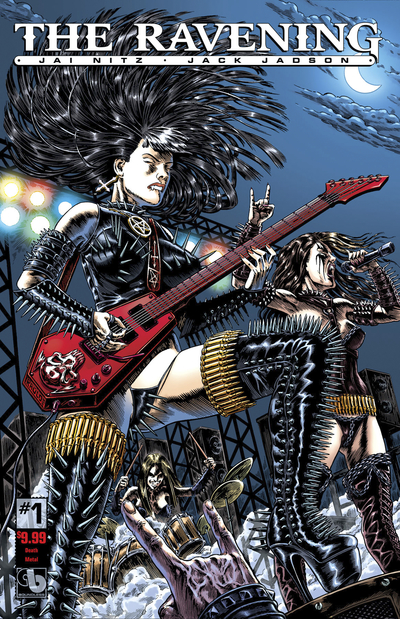
adjective
- rapacious; voracious.
noun
verb (used without object)
- to seek plunder or prey.
- to eat or feed voraciously or greedily: to raven like an animal.
- to have a ravenous appetite.
verb (used with object)
- to seize as spoil or prey.
- to devour voraciously.
noun
- rapine; robbery.
- plunder or prey.
adjective
- (esp of animals such as wolves) voracious; predatory
noun
- a traditional trickster hero among the native peoples of the Canadian Pacific Northwest
noun
- a large passerine bird, Corvus corax, having a large straight bill, long wedge-shaped tail, and black plumage: family Corvidae (crows). It has a hoarse croaking cry
-
- a shiny black colour
- (as adjective)raven hair
verb
- to seize or seek (plunder, prey, etc)
- to eat (something) voraciously or greedily; be ravenous in eating
“voracious,” 1520s, present participle adjective from an extinct verb raven “to prey, to plunder, devour greedily” (late 14c., implied in ravener), from Old French raviner (see ravenous). It is not etymologically related to raven (n.).
Old English hræfn (Mercian), hrefn; hræfn (Northumbrian, West Saxon), from Proto-Germanic *khrabanas (cf. Old Norse hrafn, Danish ravn, Dutch raaf, Old High German hraban, German Rabe “raven,” Old English hroc “rook”), from PIE root *ker-, imitative of harsh sounds (cf. Latin crepare “to creak, clatter,” cornix “crow,” corvus “raven;” Greek korax “raven,” korone “crow;” Old Church Slavonic kruku “raven;” Lithuanian krauklys “crow”).
Raven mythology shows considerable homogeneity throughout the whole area [northern regions of the northern hemisphere] in spite of differences in detail. The Raven peeps forth from the mists of time and the thickets of mythology, as a bird of slaughter, a storm bird, a sun and fire bird, a messenger, an oracular figure and a craftsman or culture hero. [Edward A. Armstrong, “The Folklore of Birds,” 1958]
Old English also used hræmn, hremm. The raven standard was the flag of the Danish Vikings. The Quran connects the raven with Cain’s murder of Abel; but in Christianity the bird plays a positive role in the stories of St. Benedict, St. Paul the Hermit, St. Vincent, etc. It was anciently believed to live to great old age, but the ancients also believed it wanting in parental care. The vikings, like Noah, were said to have used the raven to discover land. “When uncertain of their course they let one loose, and steered the vessel in his track, deeming that the land lay in the direction of his flight; if he returned to the ship, it was supposed to be at a distance” [Charles Swainson, “The Folk Lore and Provincial Names of British Birds,” London, 1886].
 Liberal Dictionary English Dictionary
Liberal Dictionary English Dictionary